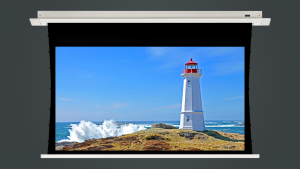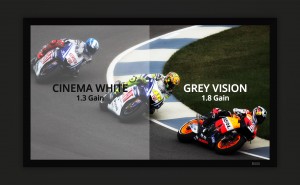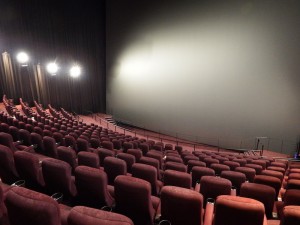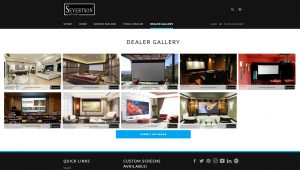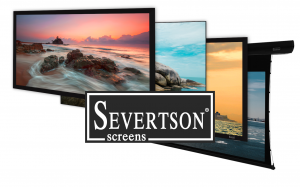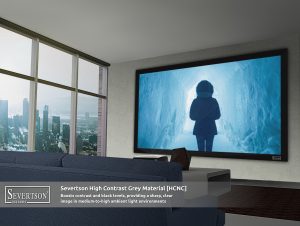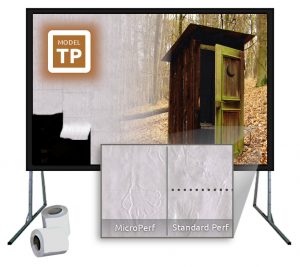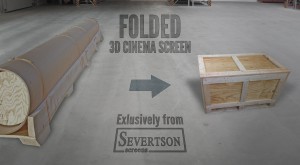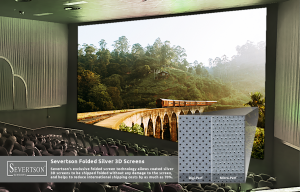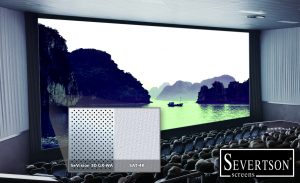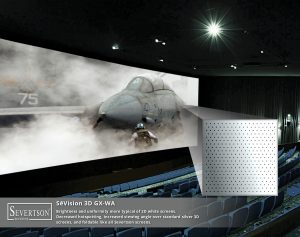Multi-Purpose Room Projection Screens… Choose Wisely
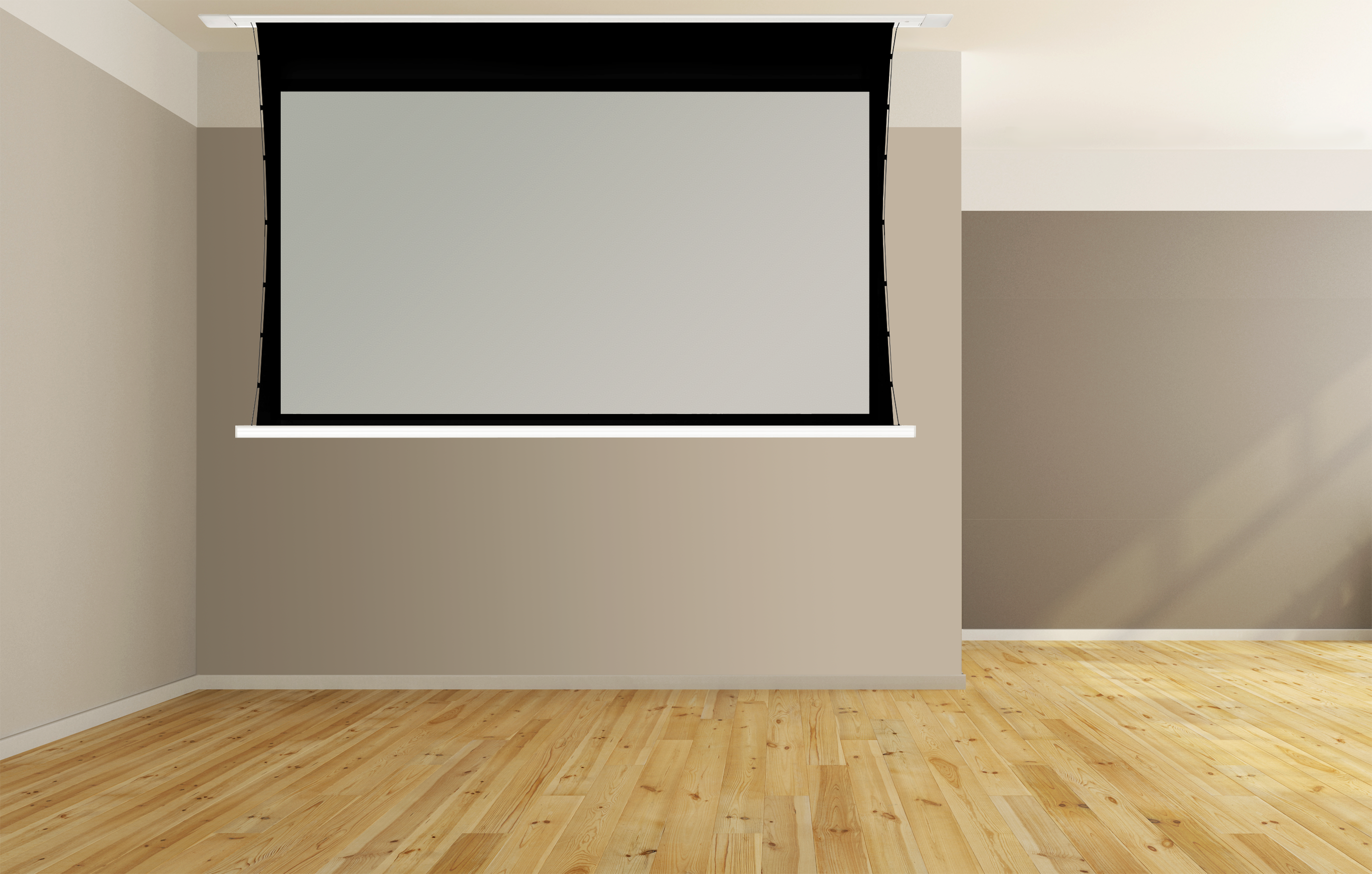
Written by Kjell Larson, Severtson Screens Home Theater / Pro AV Sales Manager
Over the years, much has been written about the efficacy of multi-purpose rooms. However, any audio/video contractor as well as many house of worship administrators will tell you that no two rooms and installations are alike. In the end, research and product knowledge is key when making decisions regarding media playback purchases. No one wants to be left in the dark as a result of poor planning and improper installations.
I’m a screen guy. It’s what I do, dealing with the vernacular, styles, and uses of screens in all kinds of rooms and situations. I would like to help de-mystify the world of projection screens, and give you a practical checklist to help you make the best projection screen buying decision for your technology/multi-purpose room.
Is Proper Screen Size Critical?
More often than not, yes it is. For multi-purpose rooms, the width of the screen should be no less than 1/6 the distance of the farthest spectator in the audience. For example, if the back row of an auditorium is 48 ft. away, then the width of the screen should be at least 8 ft. wide. This rule of thumb is for minimum screen size. It is OK to go larger, but the important thing is to get a screen that is large enough for the audience in the back row to view comfortably, but not so large as to give the closest viewers ping pong neck (this is the highly technical term given to those who get sore necks from constantly having to turn their heads from left to right to view the whole screen).
Next, you need to factor in the ceiling height. A screen should be about one foot from the ceiling and between 40 inches – 48 inches off the floor. You obviously don’t have to fill the space completely, but use these numbers to help center your screen in the optimum field of view.
Aspect ratio is a critical component and is generally determined by the projector’s native resolution. A popular resolution for technology/multi-purpose room projectors is WUXGA (1920 x 1200). This is a 16:10 aspect ratio.
When determining the size screen you want, remember that most screen companies will size by ratio and diagonal. If you give your dealer/integrator an aspect ratio and one of the three measurements (height, width, or diagonal), they should be able to fill in the blanks for the other two dimensions. Check to see what the “off the shelf” sizes are so you don’t pay a hefty custom price for your screen. Often times you can get a bigger screen off the shelf for a better price than a smaller custom screen.
Protecting Against the Elements
Make no mistake…the style of the screen can be incredibly important based on the environment it is being used in. Fixed frame, electric, flying frame, wrap-around frame with masking all should be considered when choosing the proper screen style as per the design of the room and the purpose for which it was built. If your church’s multi-purpose room doubles as a physical education arena, you need to consider how much damage an errant 3-point shot or spiked volleyball will do to a screen bracketed to the wall. If this is the case, it is likely that even a standard electric roll down screen is at risk of being damaged because of the probability of being hit by flying projectiles.
Many companies offer an in-ceiling installation, such as the Severtson Spirit Series, that presents a very low profile which minimizes potential damage from future Hall of Fame point guards. If you will be using an electric screen, you will want one that comes with adjustable black drop in order to try and fit the parameters of the above stated size rules.
Fixed frame screens do as they’re told: they just sit there and do their job. If you aren’t worried about little hands with crayons, mechanical pencils or juice box content residue, a fixed frame screen is a great value. Many screens are attached to the back of the frame via velcro or snaps. While this is effective at tensioning the screen over the short term, physics dictates that sagging between the points of attachment will occur. To remedy this, a rod tension system can be used. This keeps perfect tension along all four edges of the screen.
White vs. Grey
Historically, white has been the screen color of choice for multi-purpose rooms, but most projector gurus will tell you that if you can’t completely control the light in the space, you should probably go with a contrast grey screen.
Gray screens are often called high-contrast screens because their purpose is to boost contrast on digital projectors in viewing rooms that are not entirely dark. The gray screen absorbs ambient light better than a white screen does. In so doing, the black level on the screen is maintained. This works because, assuming the projector has ample lumen output as most modern digital projectors do, whites remain satisfyingly white while blacks are maintained at a deeper black. The net effect is to increase the contrast range of the image on the screen.
You must also consider the latent contrast value of your viewing room as well. Even when the lights are fully off, the light being reflected from the screen will bounce off of the reflective elements in the room and back onto the screen. In this situation, a gray screen will be more effective at killing this incident light and thus maintaining deeper black levels on the screen.
In layman’s terms, a grey screen helps keep the picture from “washing out” when there is ambient light present.
Conclusion
What was at one time nothing but a roll up screen and stand stuffed into the back of your multi-purpose room’s closet next to a 8mm reel-to-reel projector and roll cart, a house of worship’s projection experience can now be close to cinema quality.
As technology and installation options increase, so do the considerations it takes to make informed and calculated decisions and purchases in order to get the most out of your budget. To this end, we suggest discussing your needs with a local, accredited AV installation professional.
# # #
Kjell Larson is Severtson Screens Home Theater / Pro AV Sales Manager. He can be reached at kjell@severtsonscreens.com, call 480-610-5155, or visit www.severtsonscreens.com.
